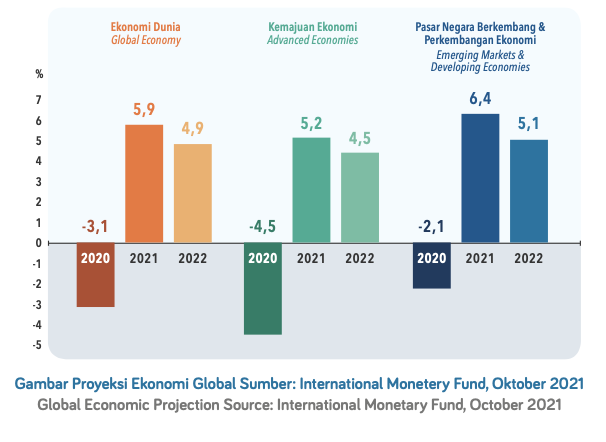ECONOMIC REVIEW
reduce the rate of virus transmission, hospitalization, reduced fatalities, and also increased the speed of patient recovery. Although the impact of vaccines varies dependent on vaccine type as well as an individual’s condition, population vaccinations is an ongoing effort by the governments of each country to suppress the spread of the virus. However, there are still many obstacles in increasing vaccine uptake, both from the aspect of supply, distribution, and public education. In addition, the unvaccinated population is feared to be a vulnerable place for the emergence of new, more dangerous variants. A new, more dangerous variant is an important factor that will change the outlook for the global economic recovery.
During the ongoing COVID-19 pandemic, 2021 entered into a recovery phase compared to 2020. The Global GDP growth reached 5.5% in 2021 (source: World Bank), after previously experiencing a drop of 3.4% in 2020. This recovery was the result of changes in the communities, Government, and business habits as they adapted to the pandemic conditions, and the recovery is expected to continue in the years ahead, with a gradual growth rate so that by the end of the pandemic the global economic growth will return to its previous position. However, the global economic recovery that occured in 2021 is marked by two issues, namely uneven economic growth and concerns over high inflation caused by an imbalance of supply and demand. Based on data provided by the World Economic Outlook in October 2021, the economic growth that occurred in countries in the world varied from 0 to 6% with several countries recorded still experiencing negative growth. In developing countries or Emerging Markets and Developing Economies (EMDE), based on projected data in October 2021, it is estimated to grow by 6.4% in 2021. While in developed countries or Advanced Economies (AEs), it is estimated to grow by 5. 2%.

